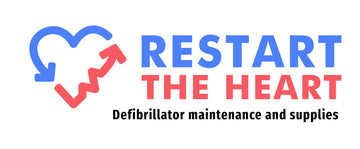Everything You Need to Know About Defibrillator Voltage
The voltage on a defibrillator is the electrical potential difference between two points. This potential difference allows an electrical current to flow between those two points. The voltage on a defibrillator is what allows it to deliver a shock to the heart that can potentially restart it.
What Are The Different Types of Defibrillators and Their Voltages
Defibrillators are devices that deliver an electric shock to the heart to stop an irregular heart rhythm and restore the heart to its normal rhythm. There are three main types of defibrillators, each of which uses a different voltage and purpose.
External Defibrillator
The first type of defibrillator is the external defibrillator, which is the most common type of defibrillator used in hospitals. External defibrillators use a high voltage (usually between 200 and 360 volts) to shock the heart. They are typically used in emergency situations, such as when a person goes into cardiac arrest.
Implantable Cardioverter Defibrillator
The second type of defibrillator is the implantable cardioverter defibrillator (ICD), a small device implanted under the skin. ICDs use a lower voltage (usually between 30 and 50 volts) to shock the heart. They are usually used for people with a history of irregular heart rhythms or at risk for sudden cardiac death.
Wearable Cardioverter Defibrillator
The third type of defibrillator is the wearable cardioverter defibrillator (WCD), a small device worn on the body. WCDs use the same voltage as external defibrillators (usually between 200 and 360 volts) to shock the heart. They are typically used for people with a history of irregular heart rhythms or at risk for sudden cardiac death.
What Are the Pros and Cons of Using a Defibrillator Voltage
When it comes to using defibrillators, one of the most important things to consider is the voltage. The voltage will determine how effective the defibrillator will be in restoring the heart's normal rhythm. There are pros and cons to using different voltages, so it is important to understand all of your options before making a decision.
One of the biggest pros of using a higher voltage defibrillator is that it is more likely to be successful in restoring normal heart rhythm. If the heart is in a very chaotic state, a lower voltage may not be enough to shock it back into a normal rhythm. A higher voltage defibrillator can differentiate life and death in these situations.
However, there are also some cons to using a high-voltage defibrillator. The most significant of these is the risk of causing injury to the patient. A high-voltage shock can cause burns or other injuries, so it is important to ensure that you are using the right voltage for the situation. If there is any doubt, it is always better to err on the side of caution and use a lower voltage.
Another con of using a high-voltage defibrillator is that it can be more difficult to control. A lower voltage defibrillator is easier to control because the shock is not as strong. This can be important if you try to avoid causing further injury to the patient.
Overall, there are pros and cons to using different voltages for defibrillators. It is important to understand all of your options before making a decision. If you are unsure, it is always better to err on the side of caution and use a lower voltage.
Conclusion
It is important to understand the basics of defibrillator voltage when choosing a device. By considering these factors, you can help ensure that you use defibrillator voltage safely and effectively. If you're not sure which defibrillator voltage is right for you, it's always best to consult with a medical or an expert professional. They will be able to help you choose a defibrillator that is both effective and safe.
If you or someone you know is in need of a defibrillator, Restart the Heart is here to help. We offer various defibrillator supplies, including AEDs, batteries, and pads. Let us help you ensure that the voltage is correct for your device and that you have the necessary accessories to keep your defibrillator in good working order. Browse through our selection of products today!

